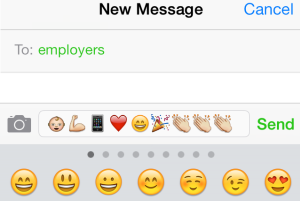February 24
Hello, my name is Samara Parker, and I am a millennial. My generation is entering the workforce en masse; we are basically taking over your office, your break room, and your life. For this, I am sorry. I am sorry for all the #selfies we post, our love of skinny jeans, and our obsession with Portland, Oregon. But I am not sorry for how my generation is pushing recruiting into the 21st century. It's about time! Gen Y is forcing recruiting to adopt social media strategies, optimize for mobile, and focus on employer branding. We're like that cute girl you want to date who motivates you to go to the gym, buy new shoes, and brush your teeth after eating garlicky food. What makes us so hot? Well...Millennials are motivated by chall…Read More









